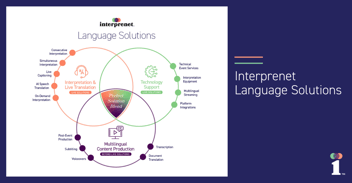
Language Services is a multi-billion-dollar industry. In 2019, the language service industry was assessed at approximately 46.9 billion US Dollars globally. In 2020, we saw significant changes due to effects of the COVID-19 pandemic, with revenues dipping slightly. However in 2021, they rose again to $56.18 Billion USD, a 16% increase, to date. Technology and the adaptability of both Language Service Providers (LSP's) and consumers shifted the predominant industries served as well as modalities of language access provided.

Industries Served
In 2020, the travel and tourism industry suffered considerably, noting a significant drop in demand according to CSA Research. However, other industries remained consistent or even realized growth. Social Networks, Gaming and Healthcare industries all experienced meaningful growth. Industries including education, business, finance, entertainment, and many more, transitioned from onsite to virtual engagement to accommodate socially distanced communication. Retailers moved from brick and mortar to online and remote work became more prevalent, which reduced much overhead cost for many employers. A reduction in overhead meant budget could be allocated elsewhere to areas such as localization, access, and inclusion.Shift to Remote Interpretation
On the LSP side, freelance translators typically work from home, so the pandemic didn't necessarily impact their working setup. Interpreters now enjoy the benefits of remote work with the increased usage of Remote Interpretation -both Remote Simultaneous Interpretation (RSI) and Remote Consecutive Interpretation (RCI). The implementation of Computer Assisted Interpretation (CAI) is another example of technology enabling professional interpreters to better support their customers and end users by incorporating tools to help with accuracy, reduction of latency and overall delivery of interpretation.We've seen cost savings for some of our clients who embraced virtual engagement and eliminated the need for on-site interpreters, A/V equipment (full and tabletop booths, headset equipment, transmitters) travel and lodging. While we anticipate hybrid and remote events will continue to be prevalent, we must also consider Zoom fatigue and the desire for basic human connection. Onsite events and travel will resume with regularity. Going forward, we will probably see a mixed bag of both traditional and virtual setups, depending upon the nature of the event and the budget of the buyer.


